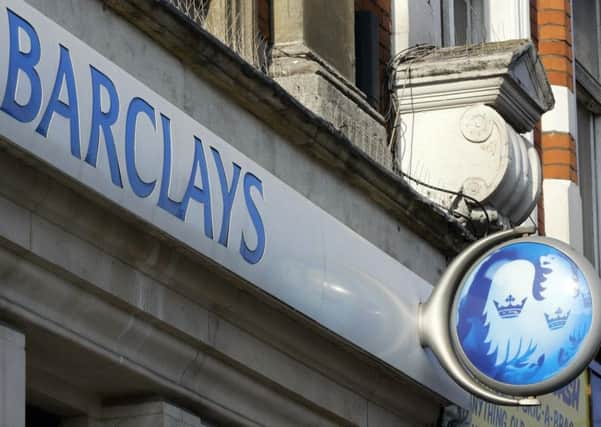Bill Jamieson: Who is the victim in Barclays court action?
This article contains affiliate links. We may earn a small commission on items purchased through this article, but that does not affect our editorial judgement.


They have been charged with fraud and unlawful financial assistance over its dealings with Qatari investors, including the former prime minister Sheikh Hamad bin Jassim in 2008 when Britain’s banking system was on the verge of collapse. But a crucial party to the proceedings will be absent. Who is the victim?
• READ MORE: Financial news
Barclays turned to the Qataris as well as other private investors for two huge cash calls in June and October 2008 that raised £11.8 billion to avoid a government bail-out.
Advertisement
Hide AdAdvertisement
Hide AdVarley and his co-directors were desperate to avoid having to go to the UK Treasury for a state rescue. They feared it would come with conditions including forced sales of assets, abandonment of global growth plans, government supervision of day-to-day management and loss of bonuses. All this was unfolding at the peak of the global banking crisis where panic was setting in.
In this febrile atmosphere it was highly doubtful that Barclays would be able to raise sufficient funds by way of a right issue to meet the regulator’s capital ratio requirement – 8 per cent or £13bn – if a state bail-out was to be avoided. So the bank turned to Gulf investors – and help duly came.
But the Serious Fraud Office (SFO) has brought charges after an extensive five-year investigation into the side deals the bank struck with the Qataris alongside the fundraisings. Its charges focus on so-called “advisory services agreements” for payments totalling £322 million made by Barclays to the Qataris, as well as a $3bn loan from the bank to the Gulf state.
As well as charging the bank on all counts, the SFO has charged Varley; Roger Jenkins, its former star banker who led its Middle Eastern business; Thomas Kalaris, who led its wealth division; and Richard Boath, the ex-head of its financial institutions group, with conspiracy to commit fraud in the June fundraising.
Varley and Jenkins also face the same charge over the October cash call as well as the unlawful financial assistance charge related to the $3bn loan. This could have broken the law if the SFO can show it was connected with the Qatari payments to Barclays. Public companies are normally prohibited in the UK from lending money for the purchase of their own shares, a process known as financial assistance.
The fraud charges each carry maximum prison sentences of ten years, while the unlawful financial assistance charge carries a possible two-year term. The bank could be fined. Jenkins’s lawyer said he “intends to vigorously defend against these charges”. The trial will be held in the full glare of publicity and could run for years. But there is a key witness absent in all of this: the victim. Legal proceedings are driven by the requirement to ensure restoration to the injured party. But who exactly is the injured party here?
Advertisement
Hide AdAdvertisement
Hide AdNot the state of Qatar. The loans have been repaid in full, it made a significant profit on its investment, it retains a 6 per cent stake in Barclays and it continues to be a big investor in the UK. Not the government. It was spared a serious escalation of the crisis – and its debt obligations – that a rescue of Barclays would have entailed. As for the financial sector, almost no institution would have escaped the repercussions of such a blow to investor and depositor confidence.
Not the taxpayer, spared the burden of financing yet another bank rescue and the constraints on public spending that would have followed. Not Barclays customers. The bank has not suffered a loss of customer confidence as a result of this deal and continues to present a competitive offer.
And not Barclays investors. While the shares suffered along with others in the crisis and the Qatari deal was ferociously costly – the instruments to which the Qataris subscribed carried an eye-watering coupon of 14 per cent – it is by no means certain that a government rescue would have spared shareholders a colossal dilution.
So who is the victim? To whom should restitution be made? None of this, of course, lifts the dark cloud that hangs over Barclays in other matters. Its chief executive Jes Staley faces a regulatory probe into his conduct against a whistle-blower. The bank has also failed to reach a settlement with US authorities over allegations it mis-sold toxic mortgage-backed securities.
It is also contesting a $1bn civil lawsuit from businesswoman Amanda Staveley, who arranged an investment in Barclays from Abu Dhabi investors during the crisis.
But in the Qatari case, where is the injured party?